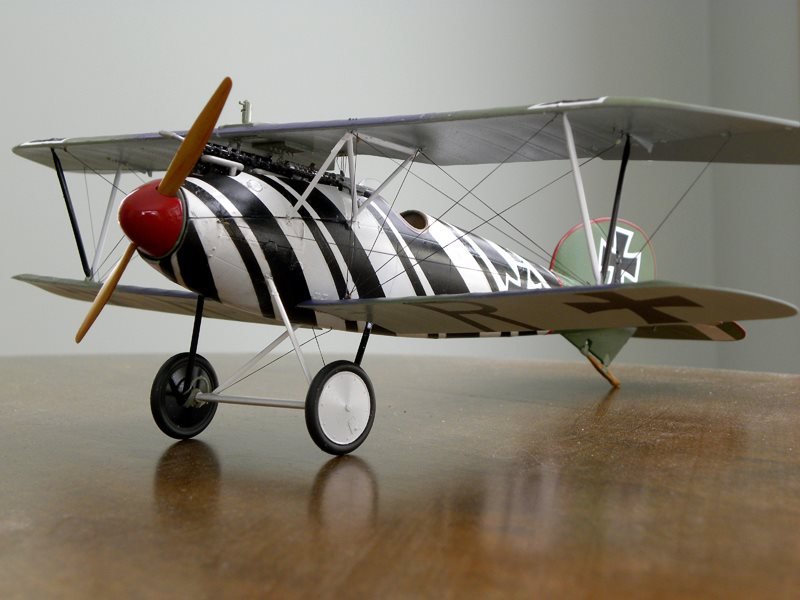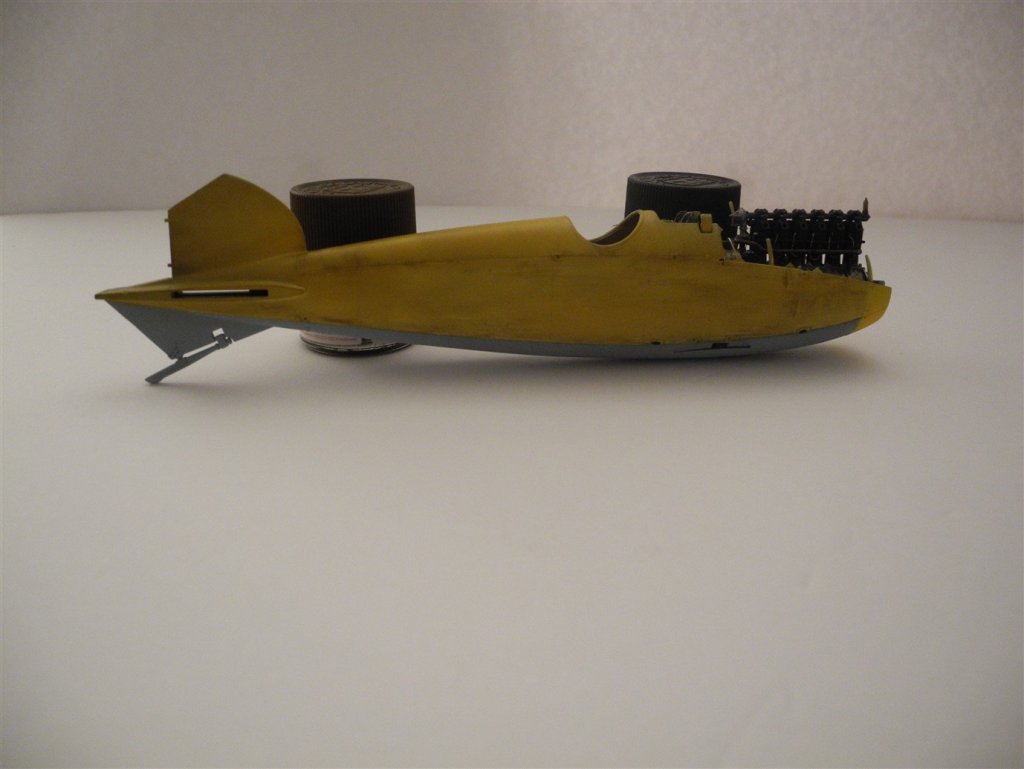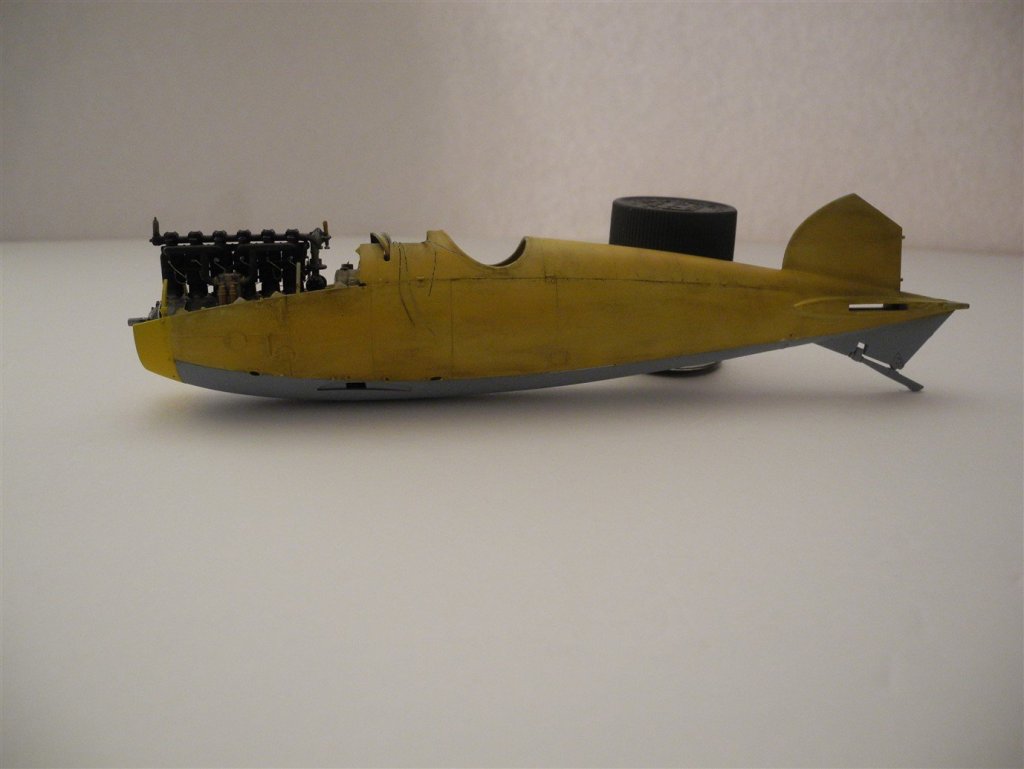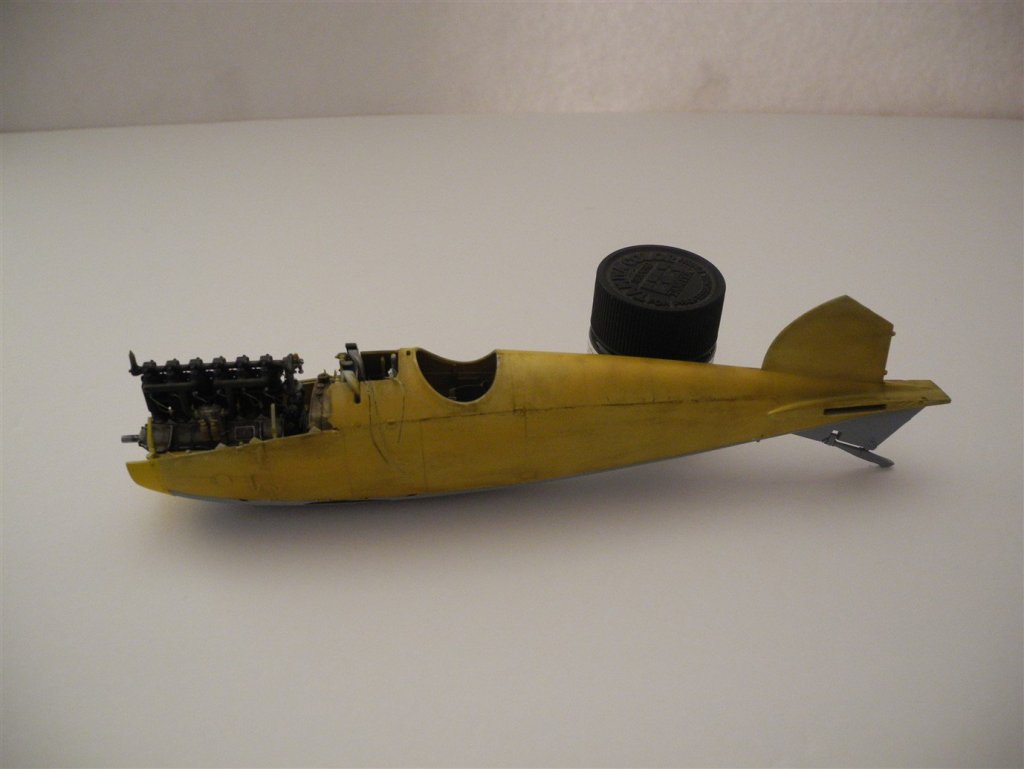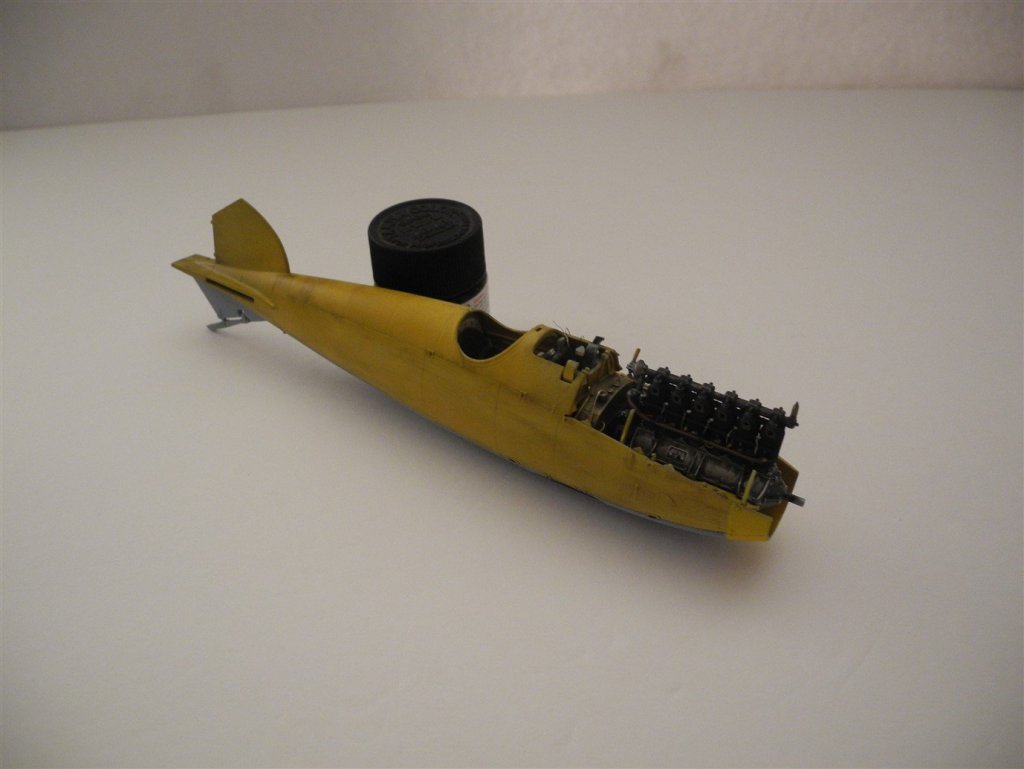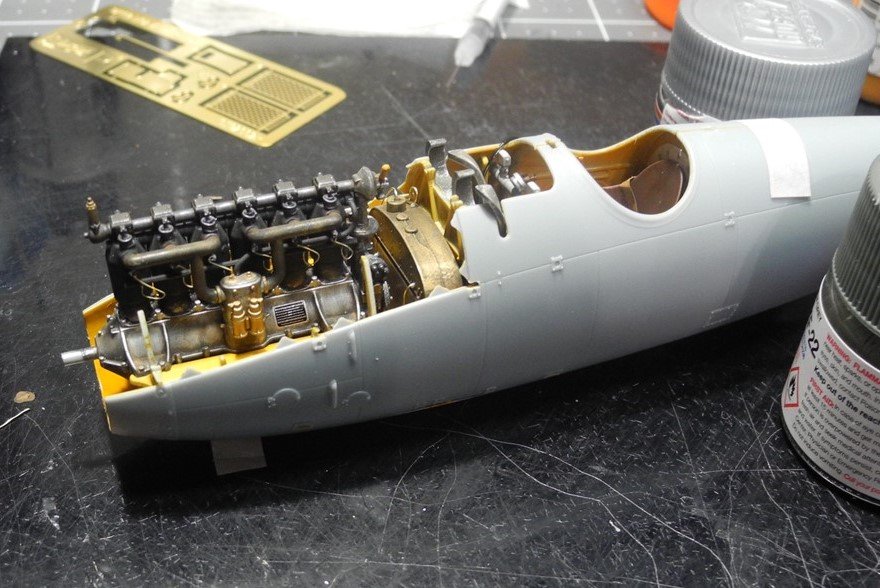-
Posts
7,724 -
Joined
-
Last visited
Content Type
Profiles
Forums
Gallery
Events
Everything posted by CDW
-
Do you have a small compressor and airbrush? If so, that should blow the dust off. if not, like you said, the aerosol cans used for dusting computer components will work. Just be careful not to blow away and lose small components that may not be securely glued down.
- 1,306 replies
-
- syren
- model shipways
-
(and 1 more)
Tagged with:
-
I sure do admire the way you took on this difficult project Phil, and the work you have done on it.
- 355 replies
-
- prince de neufchatel
- schooner
-
(and 3 more)
Tagged with:
-
photo is from Wingnut Wings Here is an actual black and white photo of Hagenmuller with his Albatros D.V The photo shows (to my eye anyway) the field applied loofa sponge mottle, showing up as the darker color. I love the way the artist rendered his drawing as I think it is very aesthetically pleasing, but the actual photo makes me think it looked different in real life. I think in retrospect, I should have toned down the suggested mottle color a little with a drop or two of white paint mixed in with the green. At this point, I may decide to cover the whole fuselage with a highly diluted (1:8 paint to thinner ratio) green tint just to take some of the edge off the mottle.
-
I must now hide my face in shame (just kidding)...I have two more copies of this kit, so at some point, I will attempt the "barber pole" paint job. I was hoping to have this model finished by/before April 27th, but I may not have enough time to finish it as it is. The regional event is coming up then. There were so many interesting Albatros paint schemes, I could build a dozen of them and not cover all the schemes I like.
-
Yes, that same picture is what gives me a little discomfort as well. However, you need to keep in mind that is not a photo of the actual plane but rather an artist rendering, IE: his interpretation (artistic license) of what the plane looked like. If you look at actual photos (black and white) of planes that had this field applied camo, then take into consideration how the paint was a applied in the field, with loofa sponges, it makes you realize there's no way in the world it would have looked as fine or as pretty as the artist rendering. My instruction sheet has some black and white photos of the actual plane and it does not resemble the artist rendering. This WW1 game is full of speculation in many areas of discussion, particularly when it came to colors.
-
Thanks JCT. This photo (courtesy of Fine Scale Modeler) is the scheme I originally had in mind. I thought my decal sheet included the black stripes, but I was mistaken. It did include the stripes for the horizontal stabilizer, but not the fuselage. Maybe it's just me, but the masking required to recreate the fuselage pattern looks like a nightmare to get it right.
-
Thanks OC. I'm a little on the fence right now over whether I like it or not. Maybe once I apply the markings and assemble the other differently painted parts it will grow on me a bit. The one scheme provided in the markings for this aircraft that I liked the most required far too much masking at very specific spacing intervals. I was concerned I would screw that scheme up for sure and didn't attempt it. With this fuselage being cigar shaped like it is, it makes for a tough masking job.
-
Earlier when you asked this question, I mistakenly answered, negative. Upon painting operations and a closer examination of the parts trees, I realized today the kit does indeed offer two different sets of wing struts. One set without the small strut, and one set with the small strut, giving the builder the option to include it or not.
-
I settled in on modeling the aircraft of Ottomar Hagenmuller, MFJ 1, late 1917. Hagenmuller was killed in action December 5, 1917. The fuselage is overall, doped plywood. Accent colors are a chrome yellow rudder, nose band, and wheels. The plywood fuselage had a field applied "loofa sponge" mottled green camouflage. I will be experimenting with a technique to capture (hopefully) the look of the loofa mottle green camo.
-
Very nice. She is very much looking the part of the infamous scourge of the seas, the Black Pearl.
-
The work you've done to open the vents on the hull looks great so far. Photo etch is very nice as well.
-
I have seen some extraordinary straight six cylinder engines at the drags. Hemi's have always been a beast of a motor. Heavy as heck compared to others, and always expensive. They never have been an "average" racer's engine, but they darn sure can make some horsepower. Speaking of straight sixes, an old fella I worked with was a round 'n round stock car racer from way back. Their motors were all straight sixes on the dirt, clay, and asphalt short tracks. Darned things ran great, too. He said the secret to building a great six cylinder race engine was to build them "loose". A tight fitting engine was a kiss of death. They would not last, blow up. They sure were fun to watch, but I never had the pleasure of driving/racing one myself. Always wanted to, just never got a round tuit. Takes a lot of hard work and money to keep a race car going through a season of racing.
-
Awesome! In my stash, I have the old Sterling kit of the Fokker D.VII in balsa, an RC model, 60" wingspan. It's so old, the vac-u-form plastic has almost disintegrated. It's nothing but a cracked, falling apart, mess. If I ever build the kit, I will certainly need to scratch all the pieces the plastic was intended to represent. I didn't realize until now that particular aircraft as pictured was Udet's plane. Always loved those markings.
-
I am sorry to say, but a complete deal, extractions and dentures, would run around $3000 and up depending on the number of teeth that needed extraction and the quality of the denture appliances. Sometimes, there are dental clinics, even dental colleges, who offer discount prices. It requires a specialty to sedate the patient. A standard dentist cannot do it. That's one reason it's so much more expensive.
-
I thought that may be the acronym as well. Around here, a pulled tooth will set you back $200 and up depending on the complications and the dentist. Sedation dentistry costs a lot more.
-
I agree Denis. The Revell line of WW1 aircraft were beautiful. I built the Spad, the DR1, and the Camel long ago. I remember when they came out in the late 60's and built mine then. The D.VII came out way later, so I missed that one. It came out in a period of time when I wasn't buying and building. I often wondered why Revell chose to model these in 1:28 scale rather than the more popular scales of 1:32 or 1:24.
About us
Modelshipworld - Advancing Ship Modeling through Research
SSL Secured
Your security is important for us so this Website is SSL-Secured
NRG Mailing Address
Nautical Research Guild
237 South Lincoln Street
Westmont IL, 60559-1917
Model Ship World ® and the MSW logo are Registered Trademarks, and belong to the Nautical Research Guild (United States Patent and Trademark Office: No. 6,929,264 & No. 6,929,274, registered Dec. 20, 2022)
Helpful Links
About the NRG
If you enjoy building ship models that are historically accurate as well as beautiful, then The Nautical Research Guild (NRG) is just right for you.
The Guild is a non-profit educational organization whose mission is to “Advance Ship Modeling Through Research”. We provide support to our members in their efforts to raise the quality of their model ships.
The Nautical Research Guild has published our world-renowned quarterly magazine, The Nautical Research Journal, since 1955. The pages of the Journal are full of articles by accomplished ship modelers who show you how they create those exquisite details on their models, and by maritime historians who show you the correct details to build. The Journal is available in both print and digital editions. Go to the NRG web site (www.thenrg.org) to download a complimentary digital copy of the Journal. The NRG also publishes plan sets, books and compilations of back issues of the Journal and the former Ships in Scale and Model Ship Builder magazines.

.jpg.7e80607770d9078b2f0b470e8c9c33ac.jpg)


.thumb.jpg.723570c4f54b2dde67d745d2355792a9.jpg)
